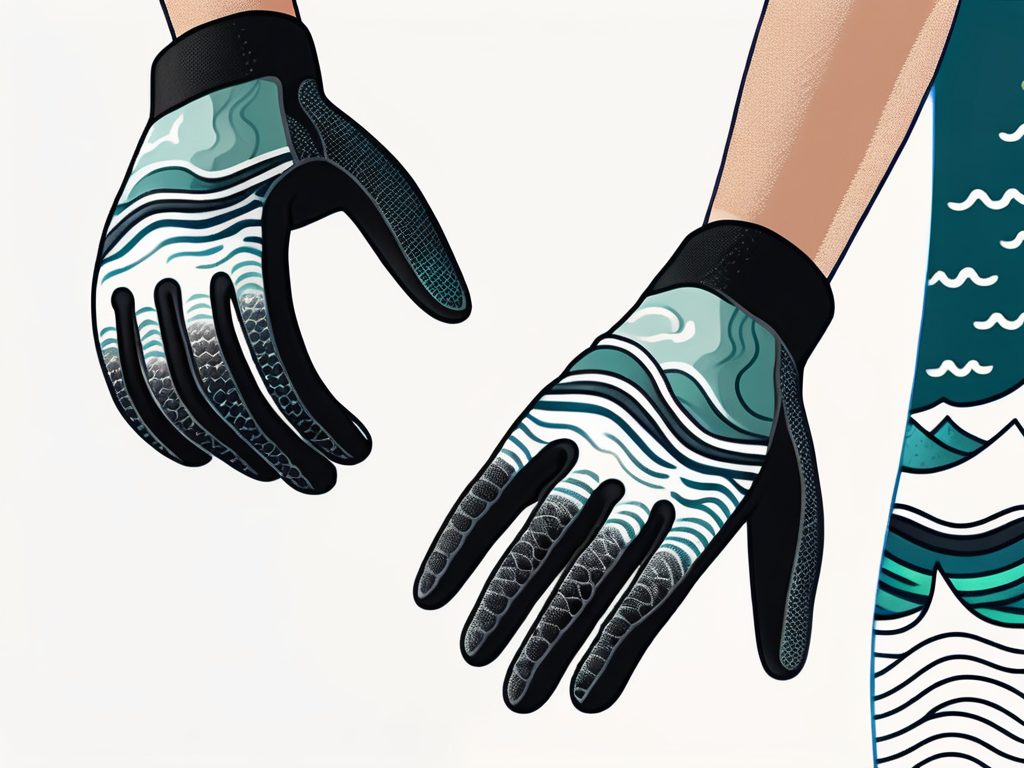In the world of surfing, staying warm in the water is crucial. The right wetsuit and surfing accessories can make all the difference between an enjoyable session and a shivering experience. In this ultimate guide, we will explore everything you need to know about wetsuits and the essential accessories that will help keep you warm while riding the waves. So grab your surfboard and get ready to hit the water with confidence!
Keeping Warm in the Water: Wetsuit Headgear Explained
Choosing Between a Wetsuit Cap and Hood
When it comes to protecting your head from the cold water temperatures, there are two main options: the wetsuit cap and the wetsuit hood. Both serve the same purpose but offer different levels of coverage.
A wetsuit cap is a lightweight accessory that covers just the top of your head. It is designed to provide insulation and prevent heat loss through your scalp. Wearing a cap can significantly reduce heat loss, keeping you more comfortable in colder waters.
On the other hand, a wetsuit hood offers full coverage, protecting not only your head but also your neck and ears. This additional coverage provides extra warmth and prevents cold water from entering these sensitive areas. A hood is recommended for those who surf in extremely cold conditions or have a low tolerance for cold water.
But did you know that the choice between a wetsuit cap and a hood can also depend on your hairstyle? If you have long hair, a wetsuit cap might be more suitable as it keeps your hair in place and prevents it from getting tangled in the water. However, if you have short hair or prefer the added warmth and protection, a wetsuit hood could be the better option.
Determining the Right Thickness for Your Wetsuit Hood
When choosing a wetsuit hood, you need to consider the thickness of the neoprene material. The thickness required depends on the water temperature you will be surfing in.
For mild to moderate temperatures, a 2mm hood should suffice. This thickness provides adequate insulation without restricting your movement. In colder waters, opting for a thicker 3mm or 5mm hood is advisable. These hoods offer more insulation to combat frigid temperatures.
It's essential to choose a hood that fits snugly but comfortably. A proper fit ensures maximum coverage and insulation while allowing freedom of movement.
Additionally, some wetsuit hoods come with built-in venting systems to prevent overheating. These vents allow excess heat and moisture to escape while keeping you warm. This feature is particularly useful for those who engage in high-intensity water activities or surf in warmer waters.
Remember, when it comes to wetsuit headgear, it's all about finding the right balance between warmth, comfort, and functionality. Whether you opt for a cap or a hood, make sure to choose a high-quality product that will keep you cozy and protected during your aquatic adventures.
Protecting Your Feet: Neoprene Boots and Socks
The Benefits of Neoprene Boots and Wetsuit Socks
When it comes to keeping your feet warm while surfing, neoprene boots and wetsuit socks are your best friends. These accessories provide insulation, protect your feet from rocks and debris, and enhance your grip on the surfboard.

Neoprene boots are the more substantial option that covers your entire foot, providing both insulation and protection against potential hazards. They are particularly useful in colder waters where heat loss from your feet can be significant.
Wetsuit socks, on the other hand, are thinner and cover only your feet. They offer insulation without compromising flexibility. Wetsuit socks are great for milder temperatures or when you prefer the feeling of bare feet on your surfboard but still want some protection against the cold.
For surfers who spend long hours in the water, the choice between neoprene boots and wetsuit socks often comes down to personal preference and the specific conditions of the day. Some surfers appreciate the all-encompassing warmth and protection of neoprene boots, while others prefer the lighter feel and increased tactile sensation provided by wetsuit socks.
Are Neoprene Boots Really Waterproof?
Neoprene boots are designed to be water-resistant, but they are not entirely waterproof. While they do a great job of keeping your feet warm, they can still allow some water to seep in. However, the water that enters the boots is quickly warmed by your body heat, helping maintain a comfortable temperature.
For those who prioritize keeping their feet dry, there are specifically designed waterproof socks available. These socks can be worn underneath your neoprene boots to provide an additional layer of protection against water leakage.
It's important to note that the fit of neoprene boots and wetsuit socks plays a crucial role in their effectiveness. A snug but comfortable fit ensures that water exchange is minimized, maximizing the insulating properties of the gear. Additionally, proper care and maintenance, such as rinsing with fresh water after each use and allowing them to dry thoroughly, can prolong the lifespan of these essential surfing accessories.
Understanding the Importance of Wetsuit Gloves
When and Why to Wear Wetsuit Gloves
Whether you're surfing in colder waters or want to protect your hands from wind and sunburn, wetsuit gloves are an essential accessory that can significantly enhance your surfing experience.

Wetsuit gloves provide insulation, preventing heat loss from your hands. This is especially beneficial in cold water, where prolonged exposure can lead to numbness and discomfort. Additionally, gloves offer protection from potential injuries, such as cuts or blisters caused by the surfboard or reef.
But did you know that wetsuit gloves also offer other advantages? One of them is improved grip. The textured palm surfaces of these gloves provide excellent traction, allowing you to maintain a firm hold on your surfboard even in challenging conditions. This enhanced grip can make a difference in catching waves and executing maneuvers with precision.
Furthermore, wetsuit gloves can protect your hands from the harsh elements. The neoprene material acts as a barrier against the cold wind, preventing windburn and reducing the risk of frostbite. It also shields your skin from harmful UV rays, reducing the likelihood of sunburn and long-term skin damage.
Exploring Different Types of Surf Gloves
When shopping for surf gloves, you'll encounter various types designed for different conditions and preferences.
Full-finger gloves are ideal for cold temperatures as they provide complete coverage and insulation for your fingers. They offer excellent warmth but may sacrifice some dexterity.
Three-finger gloves, also known as lobster gloves, provide just the right balance between warmth and dexterity. With your index finger and thumb separate from the other fingers, you gain better control and grip while still enjoying the warmth provided by the neoprene material.
Fingerless gloves are a lighter option suitable for milder temperatures. These gloves protect your palms and backs of hands while allowing maximum freedom for your fingers to grip the surfboard.
But wait, there's more! Some surf gloves even come with additional features like touchscreen compatibility, allowing you to use your smartphone without taking off your gloves. This can be especially handy when you want to capture those epic surfing moments or check the weather forecast between sessions.
Choosing the right type of gloves depends on your personal needs, preferences, and the conditions you will be surfing in. So, whether you're braving the icy waters of Northern California or enjoying the tropical waves of Hawaii, make sure to invest in a pair of wetsuit gloves that will keep your hands warm, protected, and ready for the ultimate surfing adventure.
Conclusion
By understanding the different wetsuit headgear options and choosing the appropriate neoprene boots, socks, and gloves, you can ensure a more enjoyable and comfortable surfing experience. Don't let cold water temperatures deter you from catching those waves – gear up with the right wetsuit and surfing accessories, stay warm in the water, and ride on with confidence!







